To train your dog effectively, start by understanding their behavior through body language and vocalizations. Use essential commands like "sit," "stay," and "come" consistently. Positive reinforcement, like high-value treats and praise, encourages good behavior and builds trust. Establish a routine for training sessions and guarantee everyone in your household follows the same commands. Set realistic goals tailored to your dog's breed and age, and don't forget to socialize them with other dogs. Monitor your progress and make adjustments as needed. Stick around to discover more tips that can enhance your training success and strengthen your bond.
Understanding Your Dog's Behavior
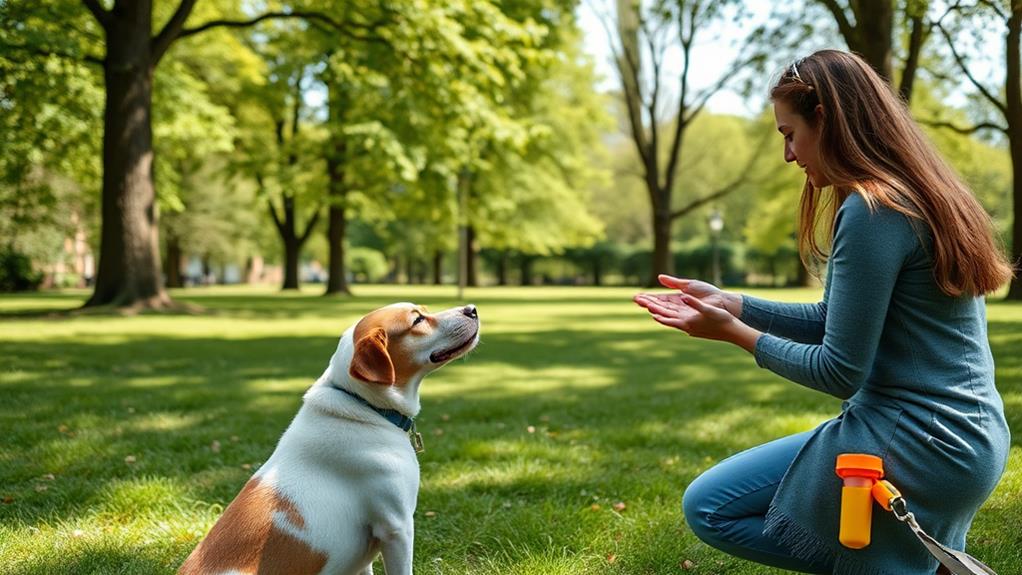
When you take the time to observe your dog's behavior, you'll start to uncover the reasons behind their actions. Dogs communicate through body language, vocalizations, and even their energy levels. For instance, if your dog wags their tail, it usually indicates happiness or excitement, while a tucked tail might signal fear or submission. Pay attention to their ears and facial expressions; these cues can reveal their mood and intentions.
Understanding your dog's behavior also means recognizing triggers that cause specific reactions. Maybe they bark at the mailman or cower during thunderstorms. Identifying these stimuli helps you find ways to address unwanted behaviors. For example, if your dog becomes anxious during fireworks, you can create a safe space for them to retreat when they feel overwhelmed.
Moreover, consider their daily routine. Dogs thrive on consistency, so irregular feeding or walking schedules can lead to anxiety. By observing how your dog interacts with their environment, you'll learn what comforts or stresses them. This knowledge is essential in fostering a trusting relationship, allowing you to better support your dog's needs and enhance their overall well-being.
Essential Training Commands
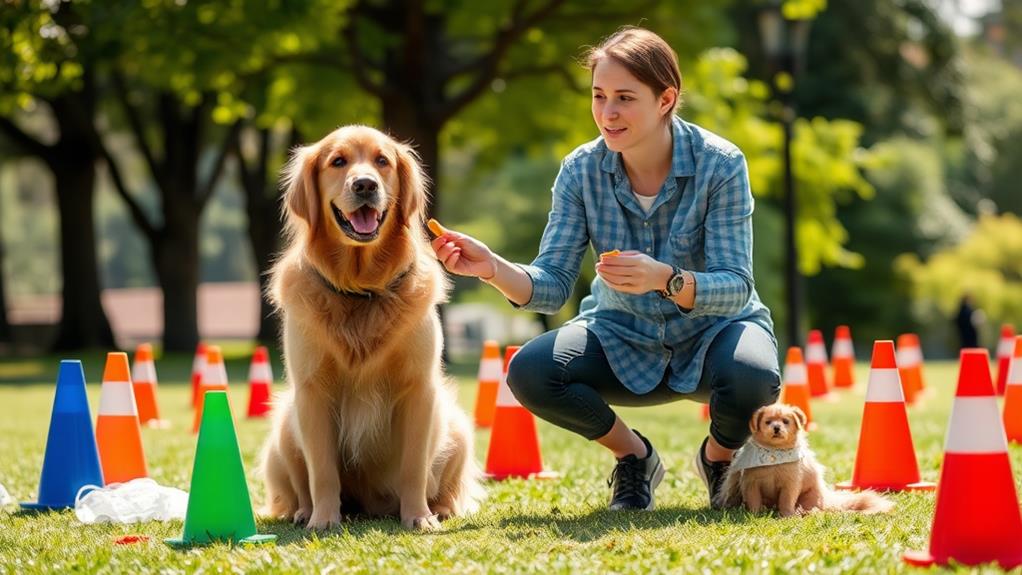
Recognizing your dog's behavior sets the stage for effective training. To foster good manners and communication, you should focus on teaching essential commands. These commands form the foundation for a well-trained dog and can significantly impact your relationship.
Start with "Sit." It's simple, and it helps you gain control in various situations. Use a treat to guide your dog into a sitting position, and once they do, praise them. Next, teach "Stay." This command encourages patience and prevents your dog from running off. Begin by asking your dog to sit, then hold your hand up and say "stay" as you take a few steps back. Gradually increase the distance.
Another essential command is "Come." This command ensures your dog returns to you when called, which is necessary for their safety. Use a happy tone to encourage them and reward them when they come to you. Finally, "Down" helps instill calmness. Start with your dog in a sitting position, guiding them downwards with a treat.
Positive Reinforcement Techniques
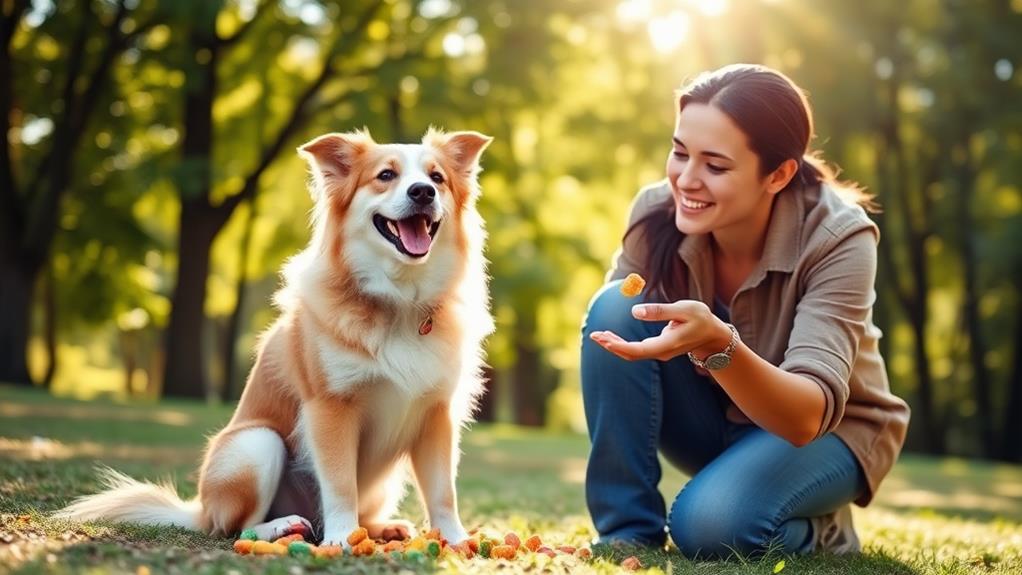
How can you effectively encourage your dog to learn commands? Positive reinforcement techniques are your best bet. By rewarding your dog for desired behaviors, you create a strong association between the action and a positive outcome. This could be treats, praise, or playtime—whatever motivates your furry friend the most.
Start by using small, high-value treats that your dog loves. When they successfully follow a command, immediately reward them. Timing is paramount; the quicker you provide the reward, the clearer the message. Verbal praise like "Good boy!" or "Well done!" also reinforces positive behavior, making your dog keen to repeat it.
Consistency is key. Always reward the behavior you want, and make sure everyone in your household uses the same commands and rewards. This helps your dog understand what you expect and builds a solid foundation for learning.
As you progress, gradually reduce treats but continue with praise. This helps your dog learn that good behavior brings joy, not just snacks. By focusing on positive reinforcement, you'll foster a trusting relationship and encourage your dog to be enthusiastic to learn new commands.
Consistency in Training
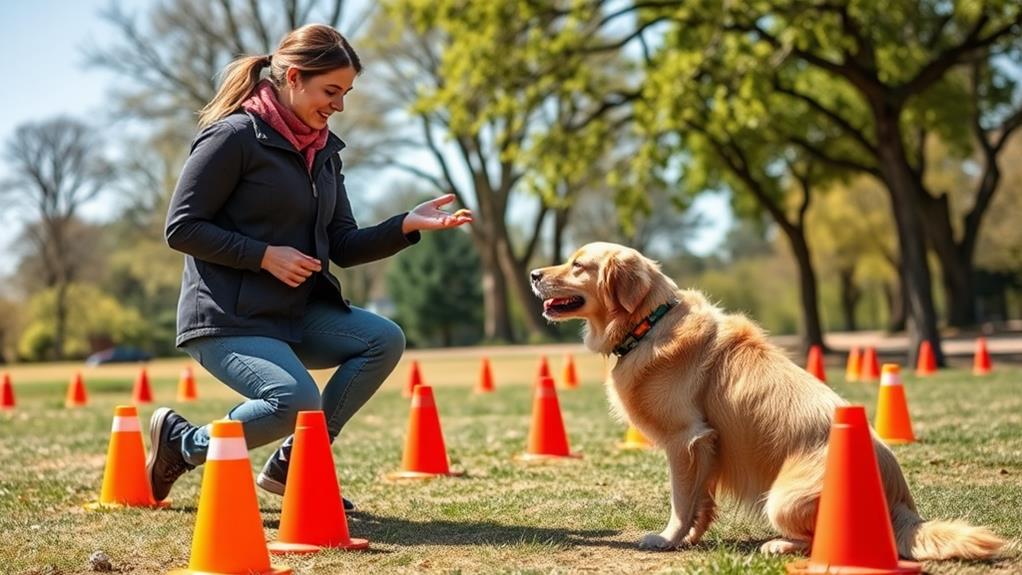
Consistency is essential in dog training, as it establishes clear expectations and reinforces learning. When you use the same commands, cues, and rewards every time, your dog begins to understand what you want. This clarity helps them feel more secure and confident in their ability to please you.
To maintain consistency in your training, keep these three tips in mind:
- Use the Same Commands: Pick specific words for commands like "sit," "stay," and "come." Stick to those words so your dog doesn't get confused with variations.
- Establish a Routine: Regular training sessions at the same time each day can help reinforce your dog's learning. Consistent timing helps your dog anticipate training, making them more likely to engage.
- Involve Everyone: Make sure everyone in your household is on the same page. If one person uses a different command or method, it can confuse your dog and slow their progress.
Setting Realistic Goals
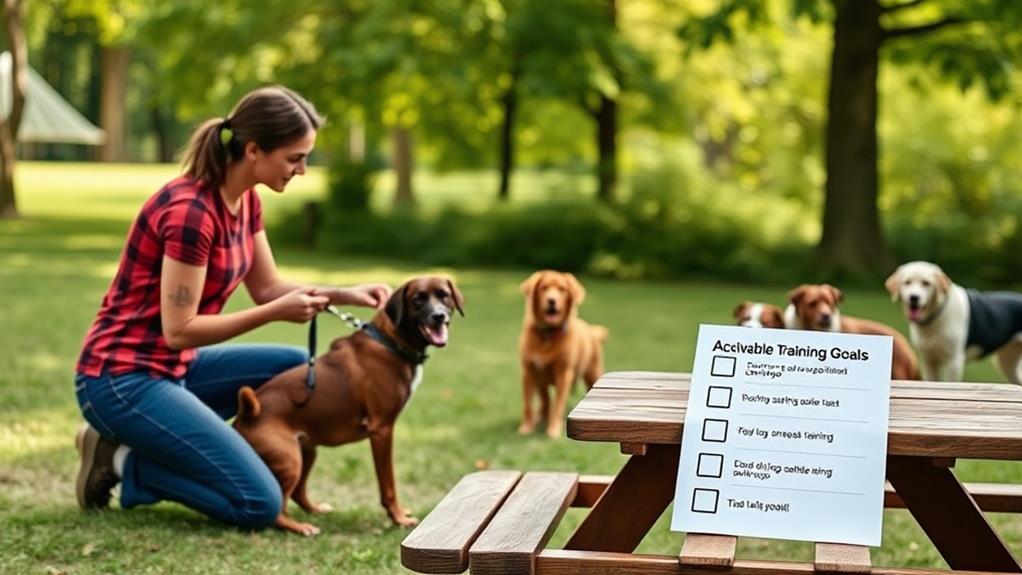
Setting realistic goals is essential for effective dog obedience training. You need to understand that training your dog is a journey, not a sprint. Start by identifying what behaviors you want to improve or teach. Break these down into manageable steps, focusing on one command or behavior at a time. For example, if you want your dog to sit, don't expect them to master it in one session.
Set specific, measurable goals, like "I want my dog to sit on command within a week." This gives you a clear target to work towards. Be patient and celebrate small victories, as they lead to bigger achievements.
It's also indispensable to consider your dog's age, breed, and temperament. Some breeds may learn faster or have different training needs. Adjust your expectations accordingly. Remember, all dogs learn at their own pace, and pushing them too hard can lead to frustration for both of you.
Lastly, stay flexible. If you find a particular goal isn't working, don't be afraid to reassess and modify it. By setting realistic goals, you'll foster a positive training experience that strengthens your bond with your dog.
Socialization Opportunities
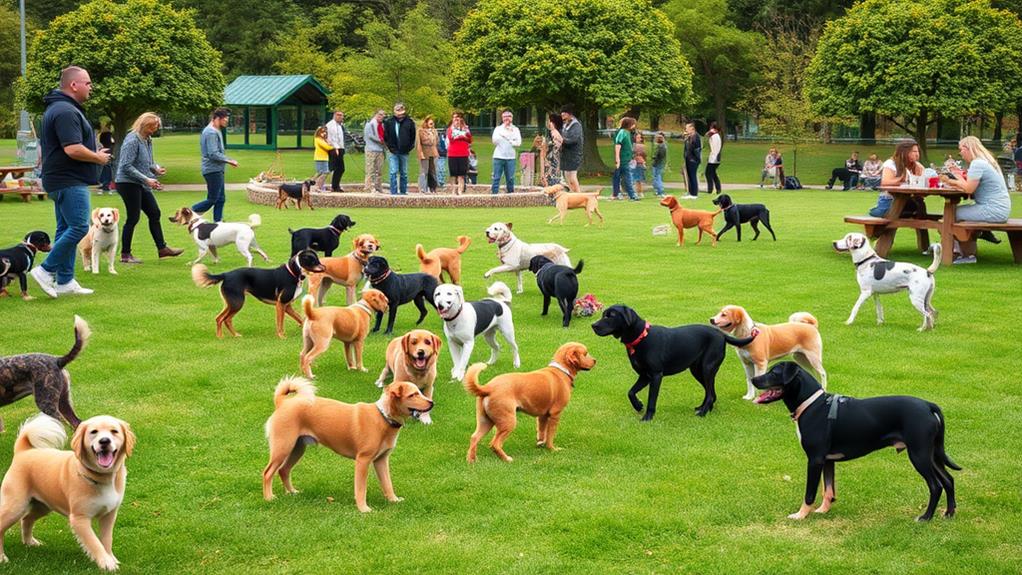
Once you've established realistic training goals, it's important to provide your dog with plenty of socialization opportunities. Socialization helps your dog learn how to interact with other dogs, people, and various environments. This is imperative for their development and behavior.
Puppy Classes: Enroll your dog in a local puppy training class. These classes often include structured playtime with other puppies, which is perfect for learning social cues.
Dog Parks: Visit a dog park where your dog can meet and play with other dogs. This setting allows them to practice their social skills in an interactive environment. Just keep a close eye on their behavior to guarantee everything stays positive.
Community Events: Attend dog-friendly events in your community, such as fairs or charity walks. These outings expose your dog to new sights, sounds, and people, enhancing their confidence and adaptability.
Dealing With Distractions

When distractions pop up during training sessions, it can throw you and your dog off course. To tackle this, you need to create a focused environment. Start by identifying common distractions in your training space, such as loud noises, other animals, or even people. Once you know what to expect, you can better prepare your dog.
Here are some strategies to help minimize distractions:
| Strategy | Description |
|---|---|
| Gradual Exposure | Introduce distractions slowly during training. |
| Use High-Value Rewards | Keep your dog engaged with treats they love. |
| Short Training Sessions | Keep sessions brief and focused to hold attention. |
Monitoring Progress and Adjustments
As you work on minimizing distractions, it's important to keep track of your dog's progress throughout the training process. Monitoring how your dog responds to commands will help you identify what's working and what needs adjustment. Regular assessment allows you to adapt your training methods effectively.
Here's how you can monitor progress:
- Keep a Training Journal: Write down each training session's details, including commands practiced, duration, and your dog's responses. This record will help you see patterns over time.
- Set Milestones: Establish short-term and long-term goals for your dog's training. Celebrate small successes, like mastering a new command or showing improved focus in distracting environments.
- Seek Feedback: If possible, work with a trainer or attend classes. They can provide an outside perspective on your dog's behavior and suggest adjustments you mightn't have noticed.
Frequently Asked Questions
How Do I Choose the Right Training Collar for My Dog?
To choose the right training collar for your dog, consider its size, temperament, and training goals. Research different types, like flat, martingale, or electronic collars, and consult your trainer for personalized recommendations.
What Age Is Best to Start Obedience Training?
You can start obedience training as early as eight weeks old. At this age, puppies are willing/receptive/keen to learn and adapt quickly. Consistent, positive reinforcement will help them develop good habits that last a lifetime.
Can I Train My Dog Without Treats?
Yes, you can train your dog without treats. Use praise, toys, or playtime as rewards instead. Focus on building a strong bond, and your dog'll respond positively to your commands and training efforts.
How Long Should Each Training Session Last?
When it comes to training, you can't rush greatness. Keep each session between five to fifteen minutes, focusing on quality over quantity. Short bursts keep your dog engaged and enthusiastic to learn. Consistency is key!
What Should I Do if My Dog Doesn't Respond to Commands?
If your dog's not responding to commands, stay calm and consistent. Use treats to motivate them, repeat commands clearly, and guarantee they're not distracted. Patience is key; keep practicing and adjust your approach as needed.
Conclusion
Training your dog might feel overwhelming at times, but remember, every small step counts. Don't worry if progress seems slow; it's all part of the journey. Embrace the process, celebrate the little victories, and stay patient with yourself and your pup. With consistency and love, you'll build a strong bond and a well-behaved companion. So, keep practicing those commands, enjoy your time together, and watch your dog flourish into the top dog you've always wanted!



